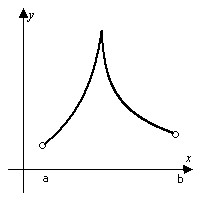Solve the problem.A ball is thrown upward with an initial velocity of 28 meters per second from a cliff that is  high. The height of the ball is given by the quadratic equation
high. The height of the ball is given by the quadratic equation  where h is in meters and t is the time in seconds since the ball was thrown. After how many seconds will the height of the ball be 40 meters? Round your answer to the nearest tenth of a second.
where h is in meters and t is the time in seconds since the ball was thrown. After how many seconds will the height of the ball be 40 meters? Round your answer to the nearest tenth of a second.
A. 7.6 sec
B. 6.7 sec
C. 6.6 sec
D. 7.7 sec
Answer: C
You might also like to view...
Find the x- and y- intercepts. If there are no intercepts write "No x-intercept" or "No y-intercept".-4x - 2y = 8
A. (-3, 0), (-4, 0) B. (-2, 0), (0, -4) C. (0, -3), (0, -4) D. (-2, -4), (-3, 8)
Determine from the graph whether the function has any absolute extreme values on the interval [a, b].
A. Absolute minimum only. B. Absolute maximum only. C. No absolute extrema. D. Absolute minimum and absolute maximum.
Solve the problem. Round your answer, if appropriate.The radius of a right circular cylinder is increasing at the rate of  , while the height is decreasing at the rate of
, while the height is decreasing at the rate of  . At what rate is the volume of the cylinder changing when the radius is 20 in. and the height is 16 in.?
. At what rate is the volume of the cylinder changing when the radius is 20 in. and the height is 16 in.?
A. -160? in.3/sec B. 2080? in.3/sec C. -160 in.3/sec D. -104 in.3/sec
(2a/3b)/(14b2c/15a2c) =
a. 7a3b-3c/17 b. 2ab3c2/7 c. 5a3b3c/7 d. 5a3b-3c/7 e. 5a3b-3/7